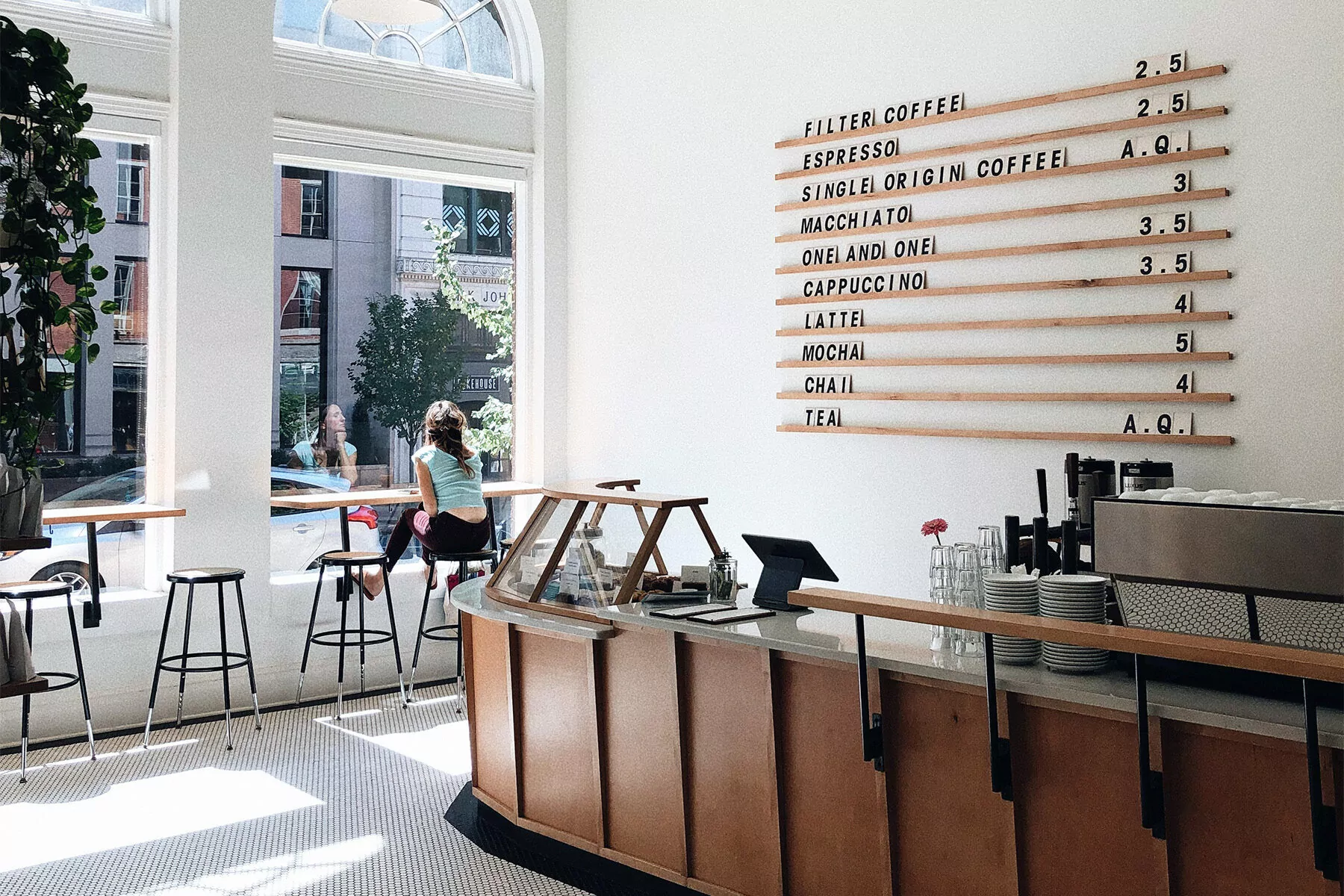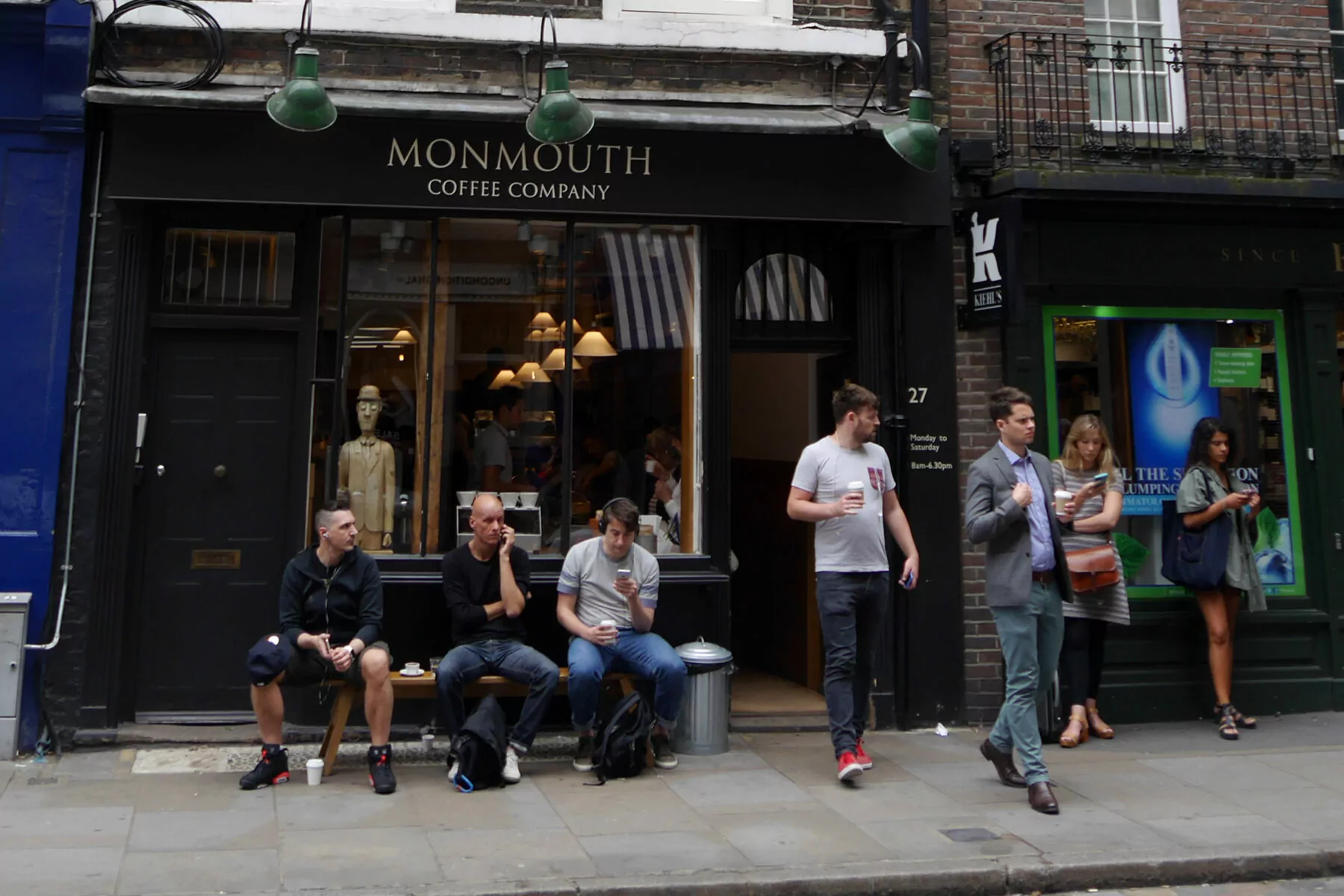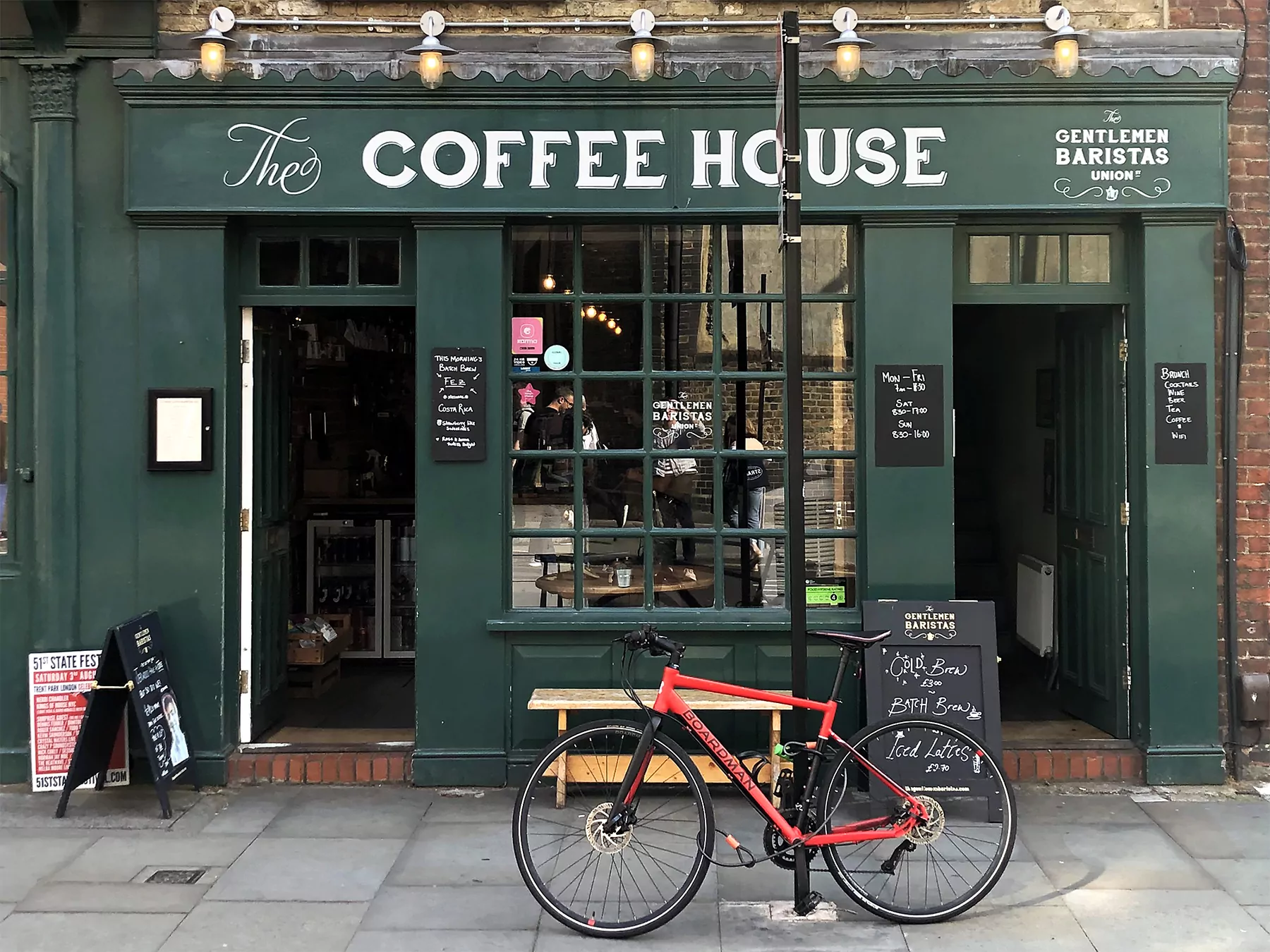
Why increasing coffee cup prices is necessary. Plus United Baristas explains how to successfully implement a price rise.
Get the latest Audio Articles by subscribing wherever you get your podcasts
This year costs have been going up, often dramatically. From electricity to espresso machines, and people’s time to packaging, higher costs are being passed down the supply chain onto retail coffee businesses.
Owners and managers are now faced with a choice of absorbing these higher costs or passing them onto consumers. For the coffee businesses seeking to establish a business-as-usual tone after lockdown, this feels like further volatility. And that’s 100% correct. Inflation is now at a four decade high. The experience of managing in a higher inflationary environment is outside the living memory of many people in coffee. And it’s simply outside many peoples’ entire experience, inflation was last this high before most baristas were born.
In this context, United Baristas thinks retail coffee businesses should learn from the past and significantly increase coffee cup prices. This way the industry can protect profit margins and gather the resources necessary to invest in a sustainable and viable future.
Here’s why.
Rising costs are here for a while yet
Rising costs can be attributed to three key events, all of which will shape the economy for the coming time.
The first is covid. Or, more specifically, the unwinding of bottlenecks following lockdowns. During lockdown, consumers shifted spending from services to goods and then swung spending back towards services again as lockdowns lifted. This made predicting demand difficult and there are now bottlenecks everywhere, most significantly in China which is still suffering rolling lockdowns in an attempt to control covid. When there are inefficient supply chains, it leads to higher prices.
Secondly, during the pandemic governments propped up their economies with financial support to keep people out of poverty and businesses from going bankrupt. The interventions were welcome, but probably overdone. Many businesses, coffee businesses included, bolstered with government grants and cheap debt, exited 2020 with stronger balance sheets than a year prior. Many companies have now spent those funds on things such as new equipment and expansion. That splurge of spending has helped to push prices up.
And, more recently, the Russian invasion of Ukraine has massively disrupted energy markets and food supplies, especially in Europe and the United Kingdom.
All of these factors will impact the economy for the foreseeable future. So, maybe unsurprisingly, the Bank of England forecasts that inflation is yet to peak, predicting (hopefully) that it will return to more normal levels over 2023.
Increasing prices almost always boosts financial performance
For most coffee shops, increasing prices is a necessary part of tackling the impact of inflation. Cutting costs is good, but increasing prices in necessary. Let’s do the maths.✣
If an average cup of coffee is £3.20 and prices are increased by an average of 10p to £3.30 – that’s £33 of extra profit per trading day for a shop selling 400 cups per day.
Great you might think, but what if customers stop coming because of the price increase? So, let’s explore a scenario where you implement the price increase poorly and there’s a customer backlash. In fact, let’s explore a situation that’s so bad that you lose 10% of your customers.
If you moved from an average coffee price of £3.20 to £3.30, coffee revenue drops from £1280 to £1188 (~£76 ex VAT per trading day).
Given most coffee shops have cost of goods sold (COGS) and labour (staff costs) running at over 50% of revenue – and many shops have net profit margins under 10% – many coffee shops could make this change, suffer this scenario, and still be financially better off!
It’s important to note that the lower your costs are, the more sensitive your profits are to changes in custom; conversely if you’re busy but have thin margins, a reduction in trade from price increases can lead to a profit enhancement for less work (especially if the lower volume allows you to trim staff costs).
Remember a price increase from £3.20 to £3.30 is just a 3% increase and may not be sufficient to cover the higher utility, ingredient and staff costs impacting your business.
To make an informed decision, you can quickly model the parameters for a price change using your shop’s sales volumes and costs to work out where the profit breakeven is.
If you think it’s possible to raise prices without losing the critical number of customers, then you can proceed to increase prices with greater confidence.
Upcoming Events
UK Cup Tasters Championship 2023
Manchester Coffee Festival 2023
Amsterdam Coffee Festival 2024
London Coffee Festival 2024
Overcoming reluctance to raise prices
There are several commonly expressed reasons why coffee shop proprietors are reluctant to raise prices.
United Baristas has previously explored how there is a strong culture of benchmarking amongst coffee businesses and we have advocated for managers to identify viable niches and further specialise their business. If your re-considering your proposition it’s interesting to start by understanding your shop’s format by segmenting it based on size and focus and considering where you might best be positioned on the iron triangle.
Also, many people who work in coffee are affable and like other people to like them. Unsurprisingly, being rejected by a customer can be emotionally taxing and is something many coffee people work hard to avoid. When discussing various coffee shop price increases, this frequently becomes personal with this abstract concern being expressed as a fear of losing a specific, long-term customer. Obviously, this might not be the right vantage point for making financial decisions and there are several ways to respond to this concern, which we will discuss below.
Finally, while financially beneficial, increasing prices is often inconvenient. Till systems must be updated, pricing cards and menus reprinted, pricing boards rewritten and websites corrected. None of this is insurmountable, but the fact that it needs to be implemented simultaneously can be challenging for many smaller coffee shop operations. Increasing prices on a regular cycle, once or twice per year, helps to build this necessary capacity.
While it is good to consider the causes of reluctance, it is important to note that none of these objections are financial.
Implementing price rises well
There are a variety of techniques to successfully implementing a price increase, and they all are underpinned by good communication.
Liaise with staff
Once you have decided to raise prices, consult with your staff. Staff are often reluctant to implement price rises because they’re the ones who bear the brunt of customer dissatisfaction.
Start by explaining that price rises are necessary for the ongoing viability of the business. Anticipating that significant price increases would be necessary this year, United Baristas has already raised their necessity with baristas and explained that baristas should welcome and support price increases.
The purpose of this consultation is to build awareness and buy-in for increasing prices. It’s also useful to get feedback, especially to identify where price rises are achievable and to understand where resistance may lie. However, it is crucial to clearly communicate at this stage that price increases will occur, you’re just consulting on the scope and scale of the increase.
Work out your new price structure
Raising prices is also an ideal opportunity to re-jig your pricing structure. Customers continually game your menu (for example, a “black coffee with a little bit of milk on the side”) and a price change is your moment to nudge them where you want to go. Drawing on personal experience, having made significant investment in bulk-brewing equipment and failing to see sufficient sales volume, we dramatically hiked the price of a Long Black / Americano and made filter coffee 10p cheaper.
Moving a significant volume of black coffee preparation from the espresso machine to the brewing equipment made barista work easier, created additional capacity for milk coffees and enabled us to get a better financial return on equipment.
Nudging customers where you want them to go is one of the reasons United Baristas advocates reducing the oat milk surcharge, which is frequently marked up well above its cost. The result is that oat milk drinkers are doing more for the planet and more for your shop’s profitability than your other customers. Assuming a business should be at least as profitable if you trim the oat milk surcharge, it becomes apparent that oat milk drinkers are actually subsidising your other customers. This is cruel and unusual in the face of climate change. You can use this price update to make your menu more revenue neutral or, even better, to nudge consumers towards better choices.
Plan
Build a list of all material and messages that need to be changed, identify who’s responsible for making each change, and agree a date for implementing the price increases.
Communicate, communicate, communicate
Once the new price structure is set, start by telling your team when the prices are going to be changed and what’s changing. Again, explain why the business is raising prices. In the past we’ve advised against using a logic that prices are going up because costs are going up; but this year is exceptional. Whatever the message you choose, the rationale doesn’t need to be comprehensive or even the key reason, but it does need to be succinct and compelling. I’ve successfully used business expansion, new equipment and investment in the coffee programme as reasons. There is currently such widespread awareness of inflation that this is likely to be the simplest narrative for most internal communications this year.
With just under a week to go, start telling your regular customers during service. Sometimes, if price increases were inflation-busting, we’d soften the impact allowing key customers to pre-purchase coffees at the existing price onto their loyalty card. You don’t need to make a big deal of the forthcoming rise, just saying ‘next Monday prices are going up a bit’ usually does the trick. And don’t ask your customers for feedback on forthcoming price rises. Asking consumers whether they want to pay more is a nonsense question; you’ll get a nonsense answer.
If you can reach half of your regular customers in the preceding days, it’ll make operations on the day you implement the price increase much easier. It also builds staff confidence that the price increases will be adequately well received by customers.
This is also the right moment to work through any concerns your team have about the forthcoming increase. Address their concerns, but don’t give way to them (unless, of course, their arguments have real merit). Use information, evidence and your rationale to communicate the need for price increases as well as highlighting the risk of not raising prices. There’s likely to be a wide range of responses and it’s not uncommon for some people on your team to resist price increases on philosophical grounds. You don’t actually need to win these people over (and probably won’t be able to using logic), but it’s useful for them to be heard so they express their dissatisfaction to you (and not to your customers). And throughout the discussions always remain focused and committed to implementing price increases and continually frame them as necessary in the context of building a viable and sustainable coffee business. Remember, as well as building buy-in from your staff, you are also helping to prepare them for their forthcoming conversations with your customers.
On the day prices are increased there’s no need to make an announcement, post on Instagram or send a email newsletter; just make sure your communications are current and accurate, the till is updated and your staff are equipped with the key message and responses to common customer questions. Time and again, price increases were a bigger deal for us internally than they were for our customers.

Always move forwards
A successful price increase is one that improves the financial performance of your business. You can measure sales performance on a week-on-week basis to ascertain the immediate impact but it’ll be necessary to review the business’s financial performance on a monthly basis for several months.
It’s important to reiterate that cup volumes or roast coffee usage are often not the best indicators of financial performance. They are a proxy, and often poor ones at that. I have never implemented a price increase and gone backwards financially – maybe, we should have been even bolder with price increases!?
However, to provide you with additional reassurance, let’s explore two backup options.
Firstly, if the change is a misstep, you can unpick it. That doesn’t mean rolling back to previous pricing, it typically involves tweaking the most erroneously mis-priced items. In my experience the optics of price increases matter so, if a re-pricing is necessary, I’m happy to tweak other items as well to create a straightforward narrative for staff and customers. Also, I typically leave small mis-pricing anomalies for the next price increase in six or 12 months’ time.
Secondly, if you lose customers following a price increase, you now have the opportunity and capacity to attract new, more profitable customers. United Baristas explained this concept in an article on updating product ranges in Pick your customers, but it’s even more straightforward with a price increase. The central insight is that a coffee shop has a maximum operational throughput, so at peak times you want to serve the most profitable customers to maximise business profitability.
The ongoing success and future viability of your coffee shop business requires a proposition that attracts and retains a niche of customers whom you can serve profitably. You can use forthcoming price increases to deal with inflation today and to build a better business for the future.
Notes
According to this article in The Economist, in the long run, periods of moderate inflation actually do little to hamper the economy, reduce price signals or undermine wages. However, consumers typically hate periods of inflation. The challenge for business is to manage in a more dynamic environment than usual. Clearly, this is a pain for most managers and has its own costs. Consequently, as during moderate inflation price increases are all but inevitable, the timing really matters. For example, if you delay until April 2023 (the start of the personal tax year) to raise prices, the business will would be significantly worse off than if you made the same price increases today.
✣ This article is based, in part, on comments United Baristas contributed to a group chat where proprietors were weighing up if and when to make price increases. For the sake of simplicity, we have used their considered price increase from £3.20 to £3.30. In the current inflationary environment, this increase strikes us as too small. Coffee cup prices can vary, but the point and principle of understanding the parameters for a proposed price increase remains the same.







